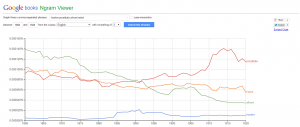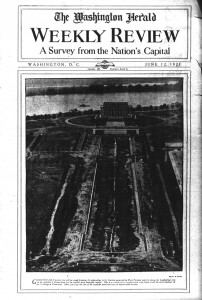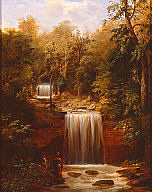In my exhibit I am going to explore the idea that the reason that prostitutes are known as hookers is due to general Joseph Hooker, a union general who was stationed in D.C. One area where he guarded was known as murder bay due to the sheer number of brothels and gambling dens it contained. It became known as Hookers Division due to the number of soldiers who visited on a regular basis.
I will include a brief history and a picture of general hooker.
This is important to the exhibit because the people who look into it are going to want a brief history of the man. It is also always nice to be able to put a face to a name.
The next Item I will include into my exhibit is an Ngram from google books covering the years 1860-1920 showing the use between hooker, whore, prostitute, and harlot. The reason I choose this time frame is that is the time frame that hookers division existed and the name would have come into play.
This is a useful and interesting graphic because while they are never the majority, the term hooker has a spike around 1884-1885. This could be used as interpretive support for the use of hookers being named after general hooker.
One other piece of information I will include in my exhibit as a piece of contradicting evidence is the idea that hookers are named after Corlears Hook. A neighborhood in New York famous for having brothels that sailors on shore leave would visit.
this is a picture of Corlears Hook from 1876, the area reputed for its brothels. This fits into the exhibit because it gives people a look into a different view point on the origins of the word and allows them to draw their own conclusions.
These three items, while they will be included into my exhibit, are not the only items I plan on having in it. I hope to obtain more evidence and pictures as I continue to do research into my topic on prostitution in D.C. during the civil war and reconstruction eras.






